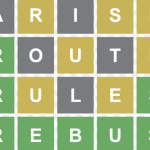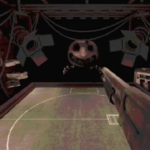That’s not my Neighbor Clown
Advertisement
Advertisement
That’s not my Neighbor Clown embeds an intriguing layer into its gameplay with the introduction of a clown character, presenting a narrative pivot that deepens the mystery of the game. Players are first introduced to this clown through a peculiar encounter—either a brochure handed to them by a visitor or, in a more direct and unsettling twist, by the clown himself. This brochure isn’t just a simple flyer; it contains a dire warning about the dangers of engaging with the clown in dreams, suggesting a sinister presence that haunts not just the physical spaces of the game but the subconscious of its players as well. Moreover, the brochure acts as a portal, offering a link to another game by the same developer, where players are invited to partake in a dice game against the clown, hinting at a deeper connection between the two experiences.
Beyond the Game: A Nexus of Narratives
This narrative device serves not just as a bridge between That’s not my Neighbor Clown and another game but as a compelling exploration of the game’s universe. Players find themselves navigating a complex web of stories that extend the gameplay experience into new, uncharted territories. The warning about the clown infiltrating dreams adds a layer of urgency and caution, transforming the game into an experience that lingers in the mind long after the screen has been turned off. Engaging in the dice game with the clown becomes more than a simple click-through to another game; it represents a challenge that ties back to the lore of That’s not my Neighbor Clown, enriching the overall narrative and encouraging players to ponder the implications of their in-game decisions. This meta-gaming aspect invites players to dive deeper into the mysteries crafted by the developer, making each interaction a piece of a larger puzzle that spans beyond the confines of a single game.
Categories
Advertisement

































































































































